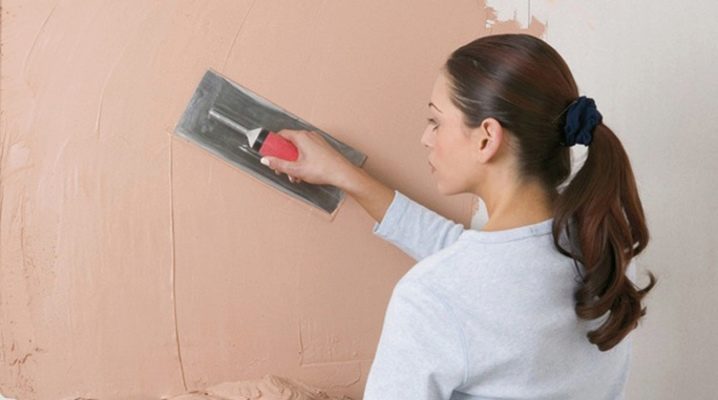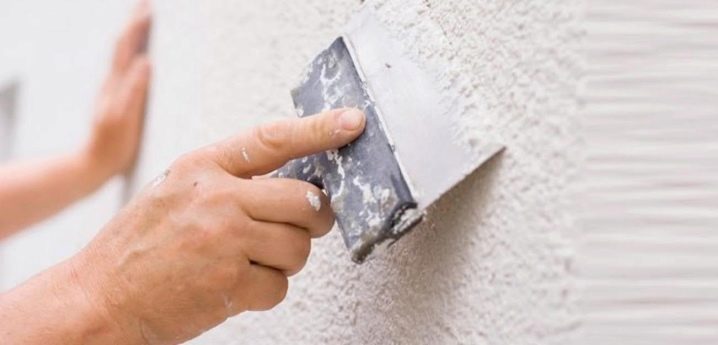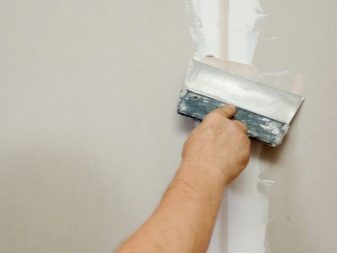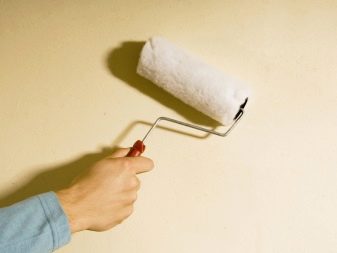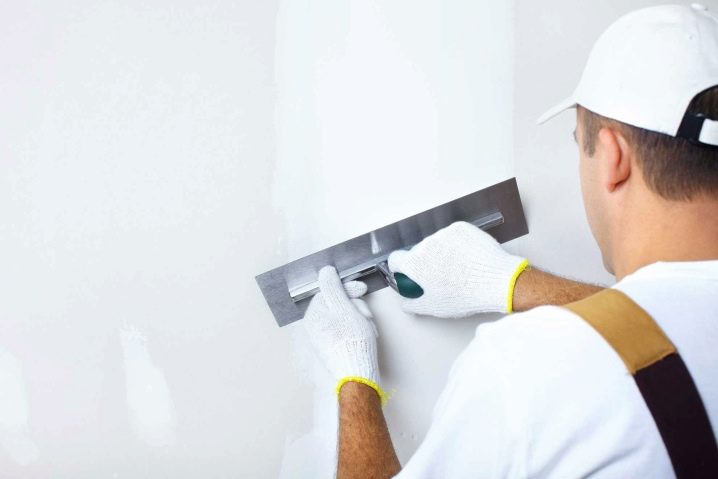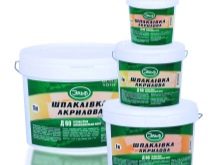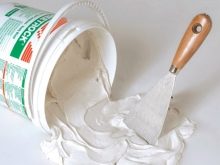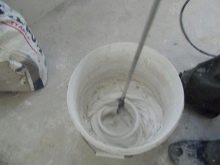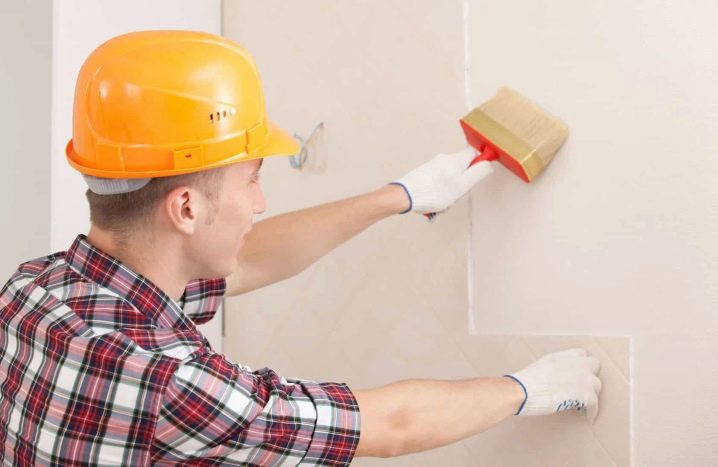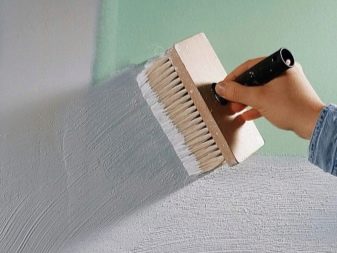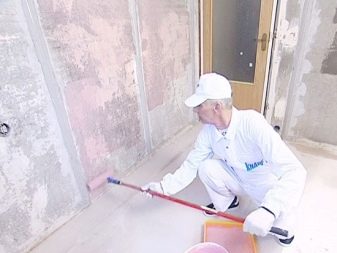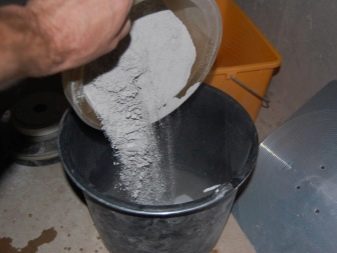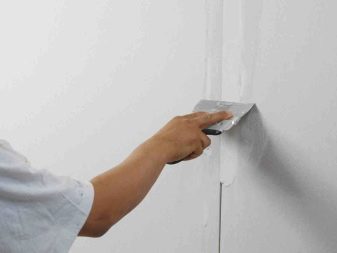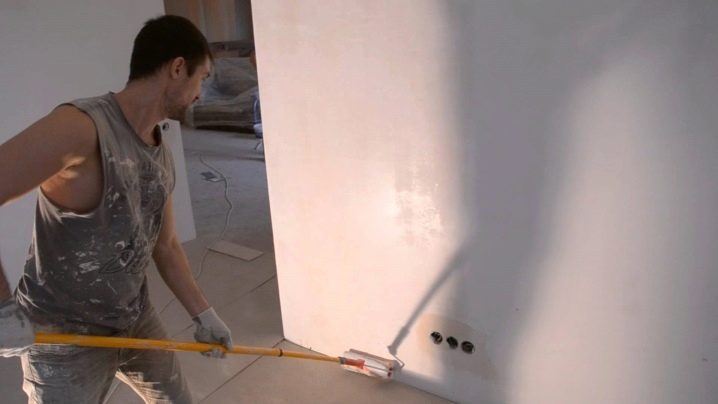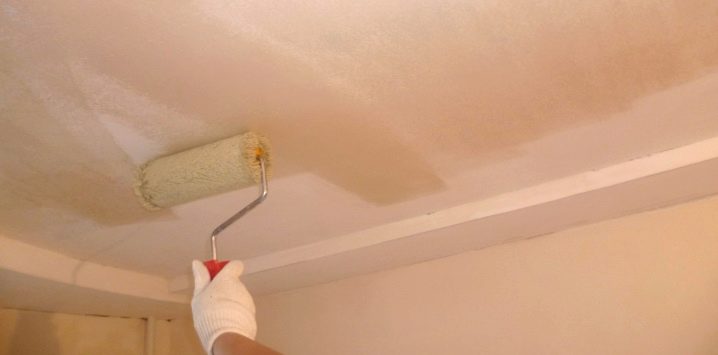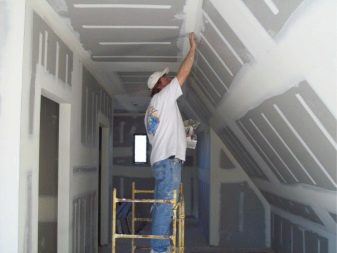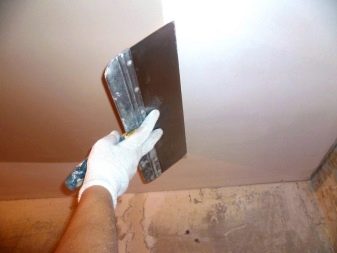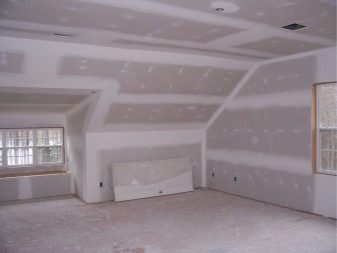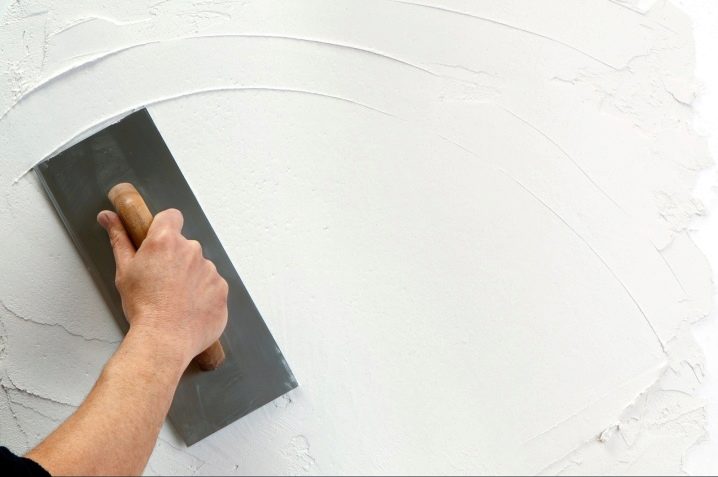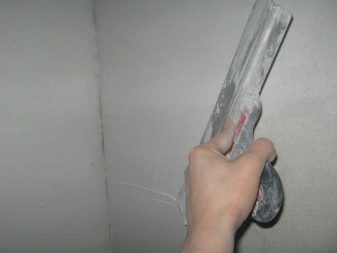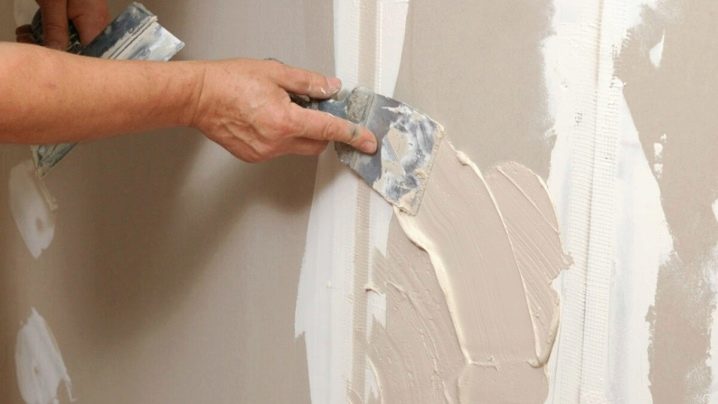Subtleties of applying a primer on drywall before puttying
Many novice repairmen or those who have decided to make repairs in their own house or apartment, are wondering whether it is worth plasterboard priming.
The unequivocal answer to this question is worth it. Why - we will understand in detail in this article.
What is primer for?
Drywall must be primed. To doubt this no longer arise, we shall understand, for which ground surfaces. Generally speaking, the primer solution is used to improve the quality of finishing works.
This result is achieved in connection with the following primer properties:
- filling small cracks and dents, which makes the surface more smooth, eliminating damage caused during the installation of drywall;
- antifungal and anti-mold effects protect the finish and your health from these pests;
- additional strengthening and protection of drywall;
- improved adhesion of surfaces, which makes it easier to stick wallpaper, tiles and paint staining.
Thus, we can see that the drywall primer is not only a possible, but necessary stage of surface treatment before puttying. But there are exceptions.
You should not process only moisture-resistant drywall.Marked by the manufacturer as GKLV. This material already has all the advantages of a primer. In addition, because of its water-repellent properties, it simply will not be absorbed into this base, collecting drops on the surface. Such drywall is usually used to repair the bathroom or other rooms with high humidity.
Also, do not primer drywall, if you are going to put on it finishing putty. It is very elastic and has a high degree of stickiness, and it is simply impossible to apply it on a water-repellent primer with a sufficiently thick layer, which makes subsequent grinding difficult.
Please note that the primer does not actually cover the walls with a film, blocking the circulation of oxygen, its structure is more like a mesh that twists the base.
Primer before laying tile is applied without failbetter in two layers. The only thing that can be relaxed is not so much leveling the putty, as the tile itself is an equal material.
Priming drywall before wallpapering makes it much easier to dismantle them later, when you want to change them.
From the above, the answer to the question whether it is worth priming drywall before puttying, plastering or other works is unequivocal. It is definitely worth it if you want to get a quality durable repair.
Types of soil
Having decided on the fact that drywall should still be primed, consider what type of primer we should choose for this.
Among the variety of materials priming mixtures are divided into three large groups.which differ in the properties of mixtures and their area of application. It is very important to choose such a mixture that fits specifically to your requirements.From this depends largely on the quality of future coverage.
Consider the existing types of primers:
- Contact mixtures. Such primers are used to improve the adhesion of materials to each other. They are used for the treatment of smooth surfaces, for example, concrete or metal, which simplifies their further processing, for example, painting, as it significantly increases the adhesion of the substrate to the finish.
- Primer blends. This is a suspension of particles similar in composition to the material with which the surface will be subsequently processed. Such mixtures significantly reduce the consumption of materials used in the finishing.
- Penetrating mixtures (penetron). Such a primer penetrates deep into the surface of the material, strengthening it and improving adhesion with subsequent layers. This type of primer is used in work with gypsum plasterboard.
Consider the properties of the latter in more detail.
Soil, after application to drywall, performs the following functions:
- Aligns the absorbing properties of the substrate over the entire surface area. Thus, when applying paint or putty, the layer will be more uniform.
- It penetrates deep into the porous base, which helps when working with joints.
- Interferes with sticking of materials in lumps when drawing on a surface.
- After drying, it does not interact with water, which is especially important if after the priming water-based paint is used.
Thus, the soil mixture improves the structure of drywall, protects against fungi and mold, increases adhesion and waterproofing of the surface. All this makes any repair better and more durable.
Criterias of choice
The choice of material for the primer should be approached very carefully. First of all, you should pay attention to the price. If the price of the mixture is two times less than the price of the same primer of well-known manufacturers, then you should not be happy and choose cheap. In a business like construction, the miser pays exactly twice. It is better to choose a proven than a cheap manufacturer.
If for some reason you still need to save on the priming mixture, choose concentrated solutions produced by well-known, well-established companies. The problem with this mixture is that it must be diluted in the right amount of water, which is indicated on the packaging in the method of use, before applying.
In addition to the price and the manufacturer, you should pay attention to the shelf life of the mixture.If the mixture is no longer valid or the term is about to expire, it may no longer have the properties declared by the manufacturer, then your money and efforts will be wasted.
It is worth paying attention to whether the mixture has special substances.to prevent mold and mildew. Such information should be sought on the packaging or to check with the seller. Typically, manufacturers emit this property of the product especially, and it is very easy to detect the presence of bio-protection in the composition of the soil mixture.
At the heart of different primer mixtures are used various substances that determine their properties and scope:
- The most versatile is the acrylic blend. Ideal for priming drywall. In addition, this mixture is easy to find without smell, which is a huge plus when used indoors.
- The mixture based on phenol should not be applied to the putty. It is most often used when priming metal and wood. Such mixtures should be used with caution indoors.
- Perchlorvinyl and polystyrene are used only for exterior decoration, it is not recommended to apply them indoors.
- Alkyd-based blends are applied only to wood.
- Polyvinyl acetate mixtures are applied only with paints on the same basis.
- Hyphthalic mixtures are very strong, but are suitable for use only in rooms with good ventilation.
For priming plasterboard suitable mixture based on acrylic, which is usually marked by the manufacturer marked "under the wallpaper."
A common misconception regarding priming mixtures is the opinion that a primer suitable for facade work cannot be applied from the inside due to the toxicity of the material. This is not true. Primer for exterior work is simply more resistant to adverse conditions, so the room will be even more durable.
Summing up, we can say that when choosing a soil mixture, first of all, you should pay attention to the composition, the manufacturer and the shelf life of the purchase. Following all these factors, you get a quality product that meets all the requirements to achieve the perfect result.
Drywall preparation
Apply a primer immediately after installation of drywall - one of the worst mistakes that can be made during the repair of the premises.Surface preparation requires a thorough approach.
Before priming the surface, you should:
- trim the seams of drywall sheets on the chamfers;
- make sure that all screws are embedded in the material and do not protrude above the surface;
- The surface for the treatment should always be cleaned of dust with a soft brush that does not lose hair. Please note that after processing with soil, all large garbage will dry out with it, and it will be impossible to remove it;
- reinforcement mesh should be attached to the seams.
Now that all the preparation work has been completed, we can proceed to the next stage.
Application process
Before you begin to directly primed, it is necessary to choose the right tool to work. Usually it is a soft roller, a brush for hard-to-reach places and a paint tray.
The primer is diluted in a clean container according to the manufacturer's recommendations, which are indicated on the packaging. First of all, with a brush, one should go through the mixture with all the corners, the joints of the material, as well as the place of drowning of self-tapping screws. After all these operations and the drying of the soil, the seams are puttied.After the putty on the seams has dried, another layer of soil is applied to the entire surface.
If the primer is of high quality, one coat will suffice. During the application, be careful to avoid material leakage, if they form, the putty in this place will lie unevenly.
Until the primer layer is dry, putty can not be applied, it is very important. Do not rush to do everything as quickly as possible, here rush only hurts the process. Usually, the primer is completely dry for about 8 hours, after which the surface is puttied.
To simplify the work, you can use the step-by-step instruction:
- Dilute the soil mixture with water in the proportions shown on the label.
- Pour a small amount of primer from the total container into the paint tray, and with a good quality brush go through all the seams and irregularities of the drywall.
- Wait for the primer to dry (depending on the manufacturer from 8 to 24 hours), and putty on the joints.
- Sand down the putty, then apply a layer of primer with a roller.
After surface treatment with a putty, let it dry, then apply an additional layer of soil over it to secure the result.To do this, use only acrylic blends that do not damage the putty. When the soil dries, it’s absolutely not worth raising dust. You can not sweep, run or in any other way to raise dirt. As mentioned above, sticking to the dry layer, unwanted elements will remain there forever, it will be impossible to remove them after drying.
The process of priming the ceiling is almost the same as what you do with the walls. Before processing the surface of the ceiling should also be properly cleaned from the remnants of previous coatings. Is that for convenience it is worth extending the roller handle so that you can safely carry out the work without using a stepladder. Naturally, all the corners and protrusions on the ceiling are properly primed.
A layer of primer both on the ceiling and on the walls should be something between “dry” and “dripping”. This result will help you achieve the right tool. And in no case do not neglect the paint bath. It will help you a lot in the process of correctly applying a primer mixture to the surface.
Consumption with the correct application of the mixture is about 100 grams per 1 m2.From this simple formula, you can easily calculate how much of the total soil mixture you need to cover the entire surface.
Useful recommendations
Experts recommend using some tips for proper performance of work.
- To easily understand which areas have already been applied primer mixture, it can add a weak dye. The mixtures themselves are usually clear, making it difficult to evenly apply the primer.
- To distinguish the penetrating primer from the strengthening primer, dip a brush in it and draw it on the wall. The penetrating is absorbed into the base, and the strengthening will leave a peculiar film trail. In addition, the strengthening primer is a liquid similar to milk.
- Choose primer blends from reputable manufacturers such as Knauf, Ceresite, Tikkurila, and other well-known companies.
- Before starting work with a primer, protect windows, clothes and skin, as the primer mixture after drying is almost impossible to remove from surfaces.
- Be sure to work in a protective mask. To breathe building chemistry is harmful enough.
- Apply a layer of soil on the putty should be only after it is aligned. Once you have primed it, the alignment process will become impossible.
- Experienced experts warn that no matter what the drying time is set by the manufacturer, it is better to be safe and give the primer to dry for at least 12 hours.
As can be seen from this article, the process of plasterboard priming is simple. With it any beginner builder will cope.
On the intricacies of applying a primer on drywall before puttying, see the following video.
